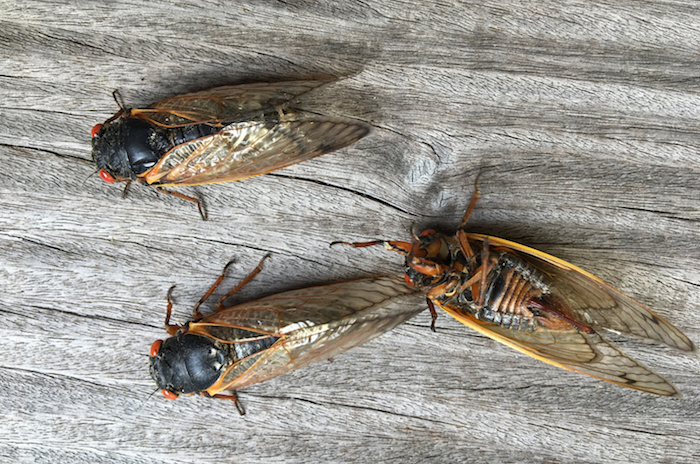Media Contacts:
Tim Pierce: tpie gwu [dot] edu (tpie[at]gwu[dot]edu), 202-994-5647
gwu [dot] edu (tpie[at]gwu[dot]edu), 202-994-5647
Kathy Facklemann: kfackelmann gwu [dot] edu (kfackelmann[at]gwu[dot]edu), 202-994-8354
gwu [dot] edu (kfackelmann[at]gwu[dot]edu), 202-994-8354
WASHINGTON (May 4, 2021)--Billions of Brood X cicadas will begin emerging within the next week or so in the Eastern United States after spending 17 years underground. They will sing mating calls, lay eggs, and then die. Once the eggs hatch sometime in August, the immature nymphs will burrow deep into the ground and this seventeen-year life cycle will start all over again.
Researchers at the George Washington University are studying the Brood X cicadas, which are part of a large order of insects known as hemipterans. John Lill, chair of the Department of Biological Sciences at GW and Zoe Getman-Pickering, a postdoctoral scientist at GW, plan to look at the impact the cicadas will have on the local ecosystem.
For example, the team will collect data on birds that normally eat caterpillars to see if they will alter their diet to feast on the bonanza of cicadas instead. Lill and Getman-Pickering predict that if the birds change their diet, more caterpillars will survive this year and typical patterns of leaf damage in local forests will be altered.
Such research will provide scientists with a better understanding of this natural phenomenon, but many mysteries about the cicadas remain unsolved, Lill said. For example, no one knows how these insects keep track of time, or how long the ecological impacts of the emergence persist.
Lill, Getman-Pickering, and their collaborator, Martha Weiss, a professor of biology at Georgetown University, began collecting data on bird diets and leaf damage during the spring and summer of 2020. They’re now monitoring the soil temperature in anticipation of the big emergence event. Scientists know that the nymphs tunnel their way out of the ground when the soil temperature reaches 64 degrees Fahrenheit.
Some of the nymphs may come out a few days early but there will be a massive emergence over the course of a few days, sometime this week or next, Lill predicts.
What happens next? The nymphs molt for the last time, spread their wings and soon start to look like the familiar adult black and orange cicadas, he said.
About a week after the emergence begins, the males start to sing courtship songs — some are as loud as 100 decibels — louder than a leaf blower or lawn mower. The females make a clicking noise to signal their interest and mating ensues.
The GW scientists will continue their research over the summer as the next generation of these 17-year cicadas hatch and burrow into the ground.
“We hope that our research will tell us more about how the cicadas affect local communities and the ecosystem,” Lill said. “By sharing the story of the cicadas, we hope the general public will start to view this natural phenomenon as a source of delight.”
Lill and Getman-Pickering have also been producing educational materials to teach K-6 students about cicadas. These can be downloaded for free at FriendToCicadas.org.
To interview the GW researchers or arrange a field trip to see these insects in their local habitat, please contact Tim Pierce at tpie gwu [dot] edu (tpie[at]gwu[dot]edu) or Kathy Fackelmann at kfackelmann
gwu [dot] edu (tpie[at]gwu[dot]edu) or Kathy Fackelmann at kfackelmann gwu [dot] edu (kfackelmann[at]gwu[dot]edu).
gwu [dot] edu (kfackelmann[at]gwu[dot]edu).
-GW-


